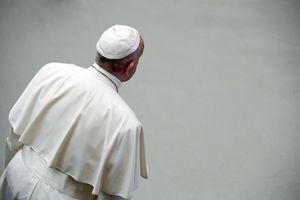As Pope Francis celebrates the 10th anniversary of his ascent as the head of the Roman Catholic Church, the Vatican over which he presides appears poised at a crucial juncture of its long and momentous history. In the course of his decade in office, Francis has anointed over a hundred new cardinals. What makes this particularly interesting is that it is the powerful College of Cardinals that constitutes the electorate that chooses the next pope. While there are 241 cardinals, only 136 are cardinal electors, since they have to be under 80 to be eligible to vote. These 136 will decide one day on Pope Francis’s successor, and thereby determine the future direction of the church. Strikingly, it is Francis who has appointed as many as 99 of the future voters. If any more are appointed before the next pope is elected, they will also be chosen by Francis.
In the process, he has dramatically reshaped the College of Cardinals. Traditionally, the red-hatted eminences were white European males, with a customary preponderance of Italians. (There have been 266 popes—217 of them from Italy). When Francis himself, an Argentinian named Jorge Mario Bergoglio, was elected in 2013, Europeans and North Americans together accounted for 64 per cent of the electors, and an even larger percentages of whites chose each of his predecessors. The last time someone from outside Europe led the Roman Catholic Church was 1,282 years ago, in the year 741. That’s when Pope Gregory III, born in Syria, ended his 10-year reign.
Since Francis’s election, and over the last 10 years, European cardinals have dropped to 39 per cent and North Americans to 10 per cent, while Asian cardinals account for 18 per cent of the electoral college, Latin Americans for another 18 per cent and Africans for 13 per cent. The North and the South, to use contemporary terminology, now have about half of the College of Cardinals each. This has created a balance between the traditional strength of the white western cardinals, who for millennia have dominated the church, and cardinals from the developing world, where the church has been growing more impressively and substantially. The regions that were largely non-white and non-western are increasingly regarded as the future of the Catholic Church, while church attendance, and even the recruitment of fresh priests, dwindles in the white western world.
This is quite remarkable, and almost unprecedented. The image of the church as a white-dominated institution is largely justified. Church records tell us there were potentially three black popes in Catholic history: Pope Victor I, who headed the church from 189 to 199 CE, Pope Miltiades (311-314), and Pope Gelasius I, who was pope from 492 to 496. That was 1,527 years ago. Since then, however, the papacy has been an all-white preserve. Laurean Rugambwa (1912-1997) was the first modern native-African cardinal of the Catholic Church, a position to which he was appointed in 1960. It took till 2020 for the first black American, Wilton Gregory, to be appointed a cardinal in the Catholic Church. Asians got there a few years earlier when Peking archbishop Thomas Tien Ken-sin (1890-1967) was elevated to the rank of cardinal in 1946 and an Indian, Valerian Gracias (1900-1978), followed suit in 1953.
This situation opens extraordinary new possibilities, including that of a non-white pope succeeding Francis. Could that be an Indian? Today, of the 241 cardinals, five are from India—Baselios Cleemis, major archbishop-catholicos of Trivandrum; Oswald Gracias, archbishop of Bombay; George Alencherry, major archbishop of Ernakulam-Angamaly; Anthony Poola, archbishop of Hyderabad; and Filipe Neri Ferrao, archbishop of Goa and Daman. The sixth and the oldest cardinal, Ranchi archbishop Telesphore P. Toppo, 83, died on October 4.
Gracias and Alencherry are 78, and will only be eligible to vote for another two years; Ferrao is 70, but has only been a cardinal since August 2022; and Poola, though just 61, has also been cardinal for just a year. But Cleemis, aged 64 and already a cardinal for 11 years, is young and vigorous and has emerged as a formidable figure with a future. He is already a cardinal to reckon with and will be even more powerful in the years to come—and who knows, might emerge, as they say in Italian, as “papabile”: electable to the papacy himself. A man for Indians to keep an eye on!
editor@theweek.in


